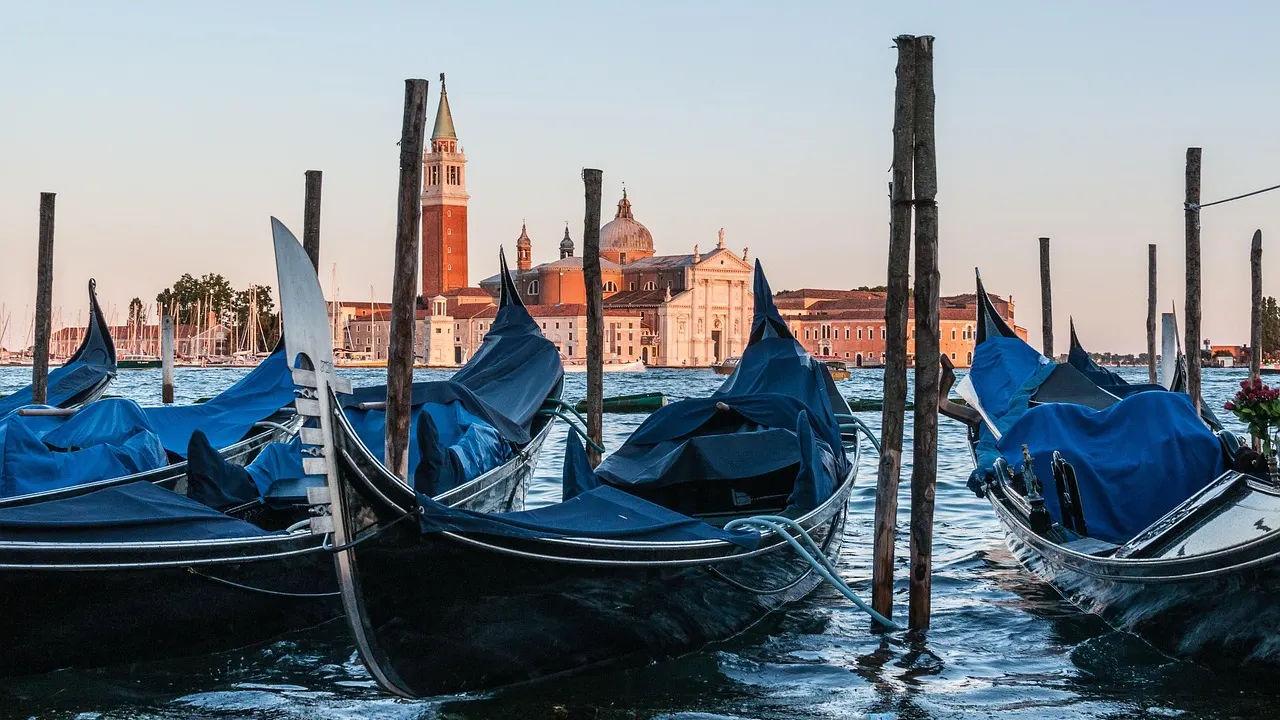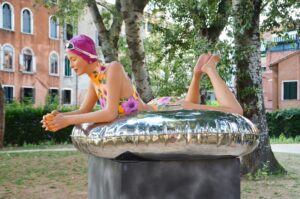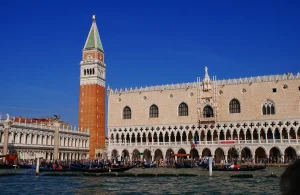🚮 Trash in a Roadless, Floating City? How Venice Keeps Itself Clean
No trucks. No streets. No problem — Venice still takes out the trash in style.
🏙️ Introduction: Trash in a Roadless, Floating City?
Venice, Italy — a city of dreams and contradictions. No cars, no streets, no delivery trucks, and yet… life goes on. Gondolas glide, cafes open, hotels restock, and behind the scenes, an invisible network of workers keeps the city spotless. But one question baffles almost every visitor:
How does garbage collection work in a city built entirely on water?
In most cities, garbage trucks rumble down asphalt roads. In Venice? Everything happens by foot and by boat. Trash collection here isn’t noisy or mechanical — it’s a carefully choreographed daily ritual, blending centuries-old methods with quiet efficiency. It’s one of the most unique sanitation systems in the world — and one of the reasons Venice still looks as pristine as it does.
Let’s walk through (literally) the fascinating world of Venice’s floating waste management system — a hidden choreography that keeps La Serenissima beautiful.
1️⃣ Why There Are No Garbage Trucks in Venice
Venice is made up of 118 islands connected by more than 400 bridges. Cars and trucks simply don’t fit into the equation. The entire historic center is car-free — no rumbling engines, no parking lots, no roads. The only wheels you’ll find belong to suitcases, carts, and trolleys.
So how does garbage move? Through an ingenious two-step process:
Phase 1: By Foot
Sanitation workers (called netturbini or operatori ecologici) walk door-to-door with two-wheeled carts, collecting trash directly from residents, hotels, and shops. It’s old-school, personal, and surprisingly fast. Each worker covers a maze of alleys and bridges daily, often before the city even wakes up.
Phase 2: By Boat
Once their carts are full, they roll them to nearby canals where special garbage boats wait. Using cranes, the carts are lifted aboard and taken to sorting facilities on the mainland. From there, waste is processed or recycled at Fusina or Porto Marghera.
This happens every single day, rain or shine, high tide or acqua alta. It’s not just routine — it’s ritual.
2️⃣ When Venice Takes Out the Trash
🕕 For Residents: 6:00–8:00 AM
Locals place trash bags right outside their front doors (never on the street) between 6 and 8 AM. Workers pass by shortly after to collect them — no bins, no dumpsters, no clattering trucks.
🕒 For Businesses: Multiple Pickups
Hotels, restaurants, and cafes have special schedules managed by Veritas S.p.A., the city’s sanitation company. Food waste and recyclables are collected multiple times a day — a vital service in a city with no storage space and millions of visitors.
3️⃣ The Company Behind the Clean
Veritas S.p.A. handles every aspect of Venice’s cleanliness:
- Residential and commercial waste collection
- Recycling management
- Street and canal cleaning
- Sewage and water treatment
Hundreds of employees crisscross Venice’s six sestieri (districts) daily. They are the city’s unsung heroes — anonymous, efficient, and essential.
4️⃣ A Day in the Life of a Venetian Garbage Collector
It’s not glamorous — but it’s heroic. Here’s how a typical day unfolds:
- Wake up before dawn.
- Walk through the assigned neighborhood with empty carts.
- Knock on doors where bags aren’t out yet.
- Haul full loads across narrow alleys and bridges.
- Wheel carts to waiting boats and lift them aboard via crane.
- Repeat — for up to 20,000 steps a day.
Each worker moves over 50 kg of waste per trip. During floods, they wear rubber boots and plastic-wrapped carts to continue service. Venice doesn’t stop — it adapts.
5️⃣ Yes, Venice Recycles — Here’s How ♻️
The Venetian waste system may be old-fashioned, but recycling is modern and meticulous. Residents and businesses separate materials carefully:
- Organic Waste: Collected separately for compost and biogas production.
- Paper & Cardboard: Flattened and bundled for collection by Veritas teams.
- Plastics & Cans: Placed in clear bags and collected on alternating days.
- Glass: Brought to nearby recycling islands (isole ecologiche) to avoid breakage and noise.
Roughly 60% of Venice’s waste is recycled — an impressive number for a medieval city floating on water.
6️⃣ Where Does All That Trash Go?
After collection, garbage boats transport waste to the mainland. At Fusina and Porto Marghera, it’s sorted, recycled, and sent to waste-to-energy facilities. About 25 specialized boats handle this process daily — keeping Venice’s 50,000 residents (and millions of guests) clean and green.
7️⃣ What About Tourists?
Many visitors look around and ask: “Where are the trash cans?” The answer: strategically limited.
- Hotels and rentals handle guest waste privately.
- Public bins are few, to prevent litter and scavengers.
- Tourists are expected to use bins responsibly or return waste to their lodging.
To promote respect, the city launched the #EnjoyRespectVenezia campaign — reminding visitors that Venice isn’t a theme park, but a living city.
8️⃣ The War on Litter: Rules, Fines, and Respect
Venice enforces strict anti-littering laws:
- No eating or picnicking on bridges and monuments.
- Fines up to €500 for littering.
- Extra surveillance in high-traffic areas.
The goal isn’t punishment — it’s preservation. Clean canals and alleys are part of Venice’s dignity.
9️⃣ Cleaning the Canals
Garbage doesn’t just stay on land. The canals themselves need constant maintenance. Specialized crews use skimmer boats to collect floating waste, while divers remove sunken debris. Seasonal dredging clears sediment and improves water flow — a constant fight between man and tide.
To witness this fascinating balance, join our Off-the-Beaten-Path Orientation Tour, where you can see how Venetians keep their lagoon alive.
🔱 When the City Floods: Trash vs. Acqua Alta
Even during acqua alta — when tides flood streets — trash collection doesn’t stop. Routes change, carts float (literally), and workers wear protective gear. It’s a wet, exhausting, but essential job. Flood or feast, Venice keeps itself clean.
💦 Why Venice Stays So Clean
Despite impossible conditions, Venice is one of Europe’s cleanest historic cities. Here’s why:
- Street Sweepers: On foot, broom in hand, every morning.
- Mini Electric Vehicles: Used in areas like Lido and Piazzale Roma where roads exist.
- Eco-Friendly Cleaners: Special detergents that don’t harm lagoon ecosystems.
The result? A car-free city that smells of the sea, not of exhaust fumes.
💡 Fun Facts About Venice’s Trash System
- DHL and Veritas use hybrid and electric garbage boats.
- During peak summer, Venice collects over 100 tons of waste per day.
- Historic archives reveal that even in the 1700s, “night men” rowed through canals to collect chamber pots.
- Garbage boats follow the same silent rhythm as delivery vessels — read more in our guide to How Deliveries Work in Venice.
🚧 Challenges & Controversies
Like any system, Venice’s has its flaws:
- Overflowing bins during high tourist seasons
- Illegal dumping by short-term rentals
- Missed pickups due to tides or strikes
- Plastic pollution in the lagoon
But local activism is strong. Venetians continue to push for eco-friendly tourism, smarter waste sensors, and stricter enforcement. Sustainability here isn’t a buzzword — it’s survival.
🌍 Is Venice a Model for the Future?
In many ways, yes. No trucks. No emissions. Minimal noise. Venice’s waste system proves that efficiency doesn’t always mean engines — sometimes it means teamwork, timing, and tide charts.
Every bag of trash is touched by human hands multiple times before disappearing — a living reminder that real sustainability requires human effort, not just machines.
🪣 Conclusion: Behind the Romance, There’s Rubbish — Managed Beautifully
When you stroll through a spotless Venetian calle or watch the moonlight dance on the Grand Canal, remember the quiet army that made it possible. Venice’s garbage collection isn’t just sanitation — it’s part of the city’s rhythm, a centuries-old ballet of boats and bridges.
In Venice, even waste moves gracefully.
🚶♂️ Want to See It in Action?
Join Tour Leader Venice for a behind-the-scenes walking tour or a private boat experience to witness how Venice truly works. Watch porters, garbage boats, and market deliveries — the heartbeat of a city built on water.
Book your authentic Venice experience today — and see how the world’s most magical city stays beautifully clean.
FAQs
How does Venice collect garbage without trucks?
Venice’s waste system works entirely by foot and boat. Sanitation workers collect trash door-to-door using hand carts, then load it onto garbage boats that transport it to mainland facilities for recycling and processing. To see how this fascinating choreography unfolds in real life, join our Venice Orientation Walk — Discover the Real City or our Venice Tour of the Lagoon — Discover the Hidden Gems.
Does Venice really recycle its waste?
Yes — around 60% of all waste is recycled. The city carefully separates organic waste, paper, glass, and plastics through a strict daily collection schedule managed by Veritas S.p.A. Residents and hotels follow detailed rules to keep the lagoon pollution-free. To explore Venice’s sustainability efforts and historic balance with nature, check out our in-depth guide How Do Deliveries Work in Venice?
Can I see how Venice’s logistics system works during a visit?
Absolutely. You can watch the “backstage Venice” in action by joining a private behind-the-scenes tour. Our Venice Orientation Walk and Private 1-Hour Boat Tour (Grand Canal + Hidden Canals) reveal how deliveries, garbage collection, and daily life flow seamlessly through the canals — without a single car or truck in sight.







